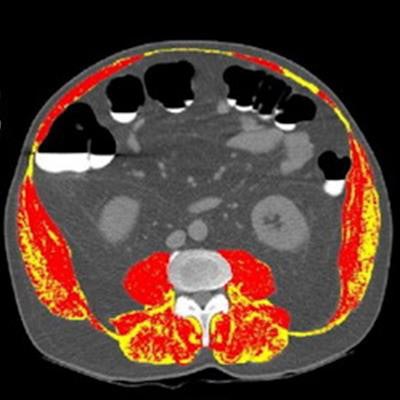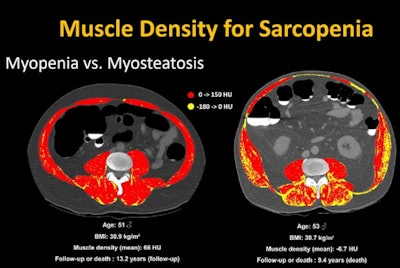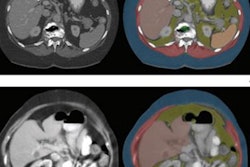
Patients undergo abdominal CT scans for a wide variety of indications. The modality's ubiquity means it has great potential to assess other health measures in what's becoming known as opportunistic screening, according to a presentation delivered at last week's International Society for Computed Tomography (ISCT) meeting.
Using CT for opportunistic screening just makes sense, presenter Dr. Perry Pickhardt of the University of Wisconsin in Madison told session attendees.
"[CT's] robust additional data often goes unused in practice," he said. "[But] relevant measures -- such as body composition -- [could be used] for rapid and objective assessment [of a patient's health]. [Using CT in this way would add] value to services we already provide."
In his talk, Pickhardt outlined various ways that CT could be leveraged to improve patient care through early screening, noting that the exam is common in adults for a variety of clinical indications.
"Opportunistic CT screening's current relevance is related to a confluence of factors, [including] the objective and generalizable nature of CT imaging, the large volume of body CT scans performed in adults, the emergence of fully automated artificial intelligence solutions, and the emphasis on precision medicine and value-added initiatives," he noted.
Patients undergoing abdominal CT exams for other indications could also be screened for the following conditions:
- Osteoporosis
- Cardiovascular disease
- Sarcopenia
- Metabolic syndrome or diabetes
- Liver steatosis and fibrosis
- Organomegaly
- Unsuspected masses or cancers
- Undiscovered genetic conditions
 Image courtesy of Dr. Perry Pickhardt.
Image courtesy of Dr. Perry Pickhardt.CT-based body composition markers related to fat, muscle, calcium, liver, and bone also contribute valuable data, according to Pickhardt.
"These analogous manual- semi-, and fully-automated measures can be applied to nearly any abdominal or chest CT with or without intravenous contrast," he said.
Making use of additional clinical data on CT imaging could also save healthcare costs, especially when artificial intelligence (AI) tools are used as well, Pickhardt said. He cited research that found that AI-assisted CT-based opportunistic screening was a cost-effective and clinically efficacious strategy -- and in fact was "cost-saving under most conditions."
The UW is conducting research with a population-based mixed CT cohort of 150,000 patients, and it may expand this effort to a multicenter collaboration with the Opportunistic Screening Consortium in Abdominal Radiology (OSCAR), which will include data from 1 million individuals.
It's possible that CT could be used as a standalone wellness screening tool, incorporating colorectal and lung cancer screening and body composition measures that may indicate disease.
"The ultimate goal of [opportunistic screening with CT would be] prospective risk profiling in practice," Pickhardt concluded.





















